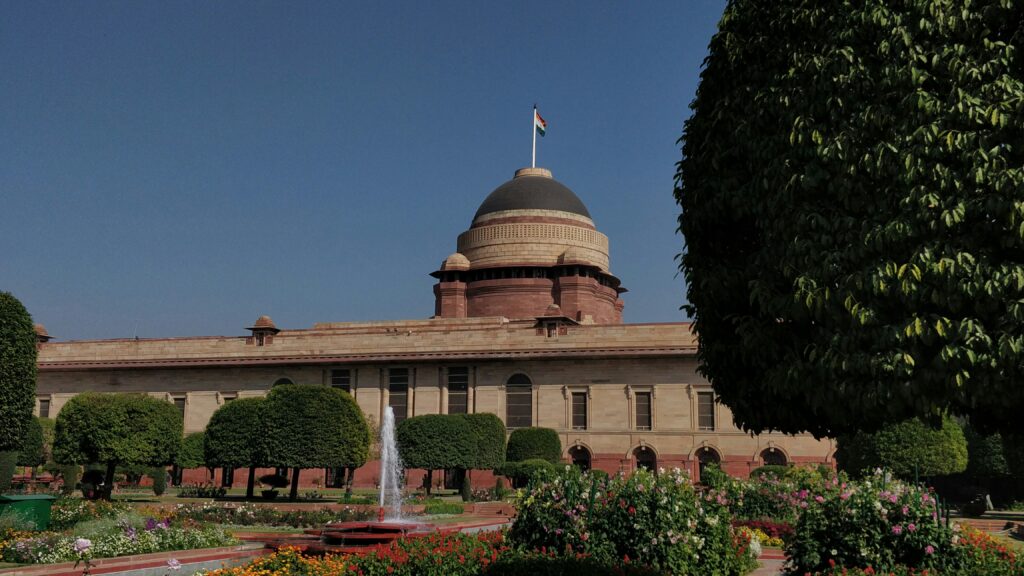The Government Budget is a fundamental concept in macroeconomics that outlines the estimated revenue and expenditure of the government for a financial year. It plays a crucial role in regulating the economic activities of the country, redistributing income, and ensuring efficient resource allocation. The budget is presented annually by the Finance Minister in the Parliament and is a key tool of fiscal policy.

Definition of Government Budget
A Government Budget is a statement of the estimated receipts and expenditures of the government over the fiscal year, which runs from 1st April to 31st March. It is divided into Revenue Budget and Capital Budget.
Objectives of Government Budget
- Allocation of Resources – The government allocates resources through various schemes, public goods, and services. For example, expenditure on education and healthcare.
- Redistribution of Income and Wealth – Through taxation and subsidies, the budget helps reduce income inequality.
- Economic Stability – By managing inflation, unemployment, and growth through fiscal policy, the budget maintains macroeconomic stability.
- Growth and Development – Government spending on infrastructure, industries, and research contributes to national development.
- Correcting Market Failures – Budgetary policies help in addressing externalities and ensuring social welfare.
Components of Government Budget
The Government Budget has two major components:
1. Revenue Budget
The revenue budget consists of the government’s revenue receipts and revenue expenditures.
a. Revenue Receipts
These are the earnings of the government that do not create any liability or reduce any asset.
Revenue Receipts = Tax Revenue + Non-Tax Revenue
- Tax Revenue: Includes both direct and indirect taxes.
- Direct Taxes: Income tax, Corporate tax
- Indirect Taxes: GST, Customs duties, Excise
- Non-Tax Revenue: Includes interest receipts, dividends from PSUs, fees, and fines.
b. Revenue Expenditure
These are expenditures that do not result in the creation of assets or reduction of liabilities.
Examples: Salaries, pensions, interest payments, subsidies, grants.
2. Capital Budget
The capital budget consists of capital receipts and capital expenditure.
a. Capital Receipts
These are receipts that either create liabilities or reduce assets.
Examples:
- Borrowings (from domestic or foreign sources)
- Recovery of loans
- Disinvestment (sale of PSUs)
b. Capital Expenditure
These are expenditures that lead to the creation of assets or reduction of liabilities.
Examples:
- Loans to states/UTs
- Investment in infrastructure
- Purchase of machinery or buildings
Balanced, Surplus, and Deficit Budget
✅ Balanced Budget
When estimated revenue equals estimated expenditure.
Revenue = Expenditure
📈 Surplus Budget
When revenue exceeds expenditure.
Revenue > Expenditure
📉 Deficit Budget
When expenditure exceeds revenue.
Revenue < Expenditure
Most developing countries, including India, often operate with a deficit budget to meet developmental goals.
Types of Deficits
There are three important types of budget deficits:
1. Fiscal Deficit
It is the excess of total expenditure over total revenue receipts and non-debt capital receipts.
Fiscal Deficit = Total Expenditure – (Revenue Receipts + Non-Debt Capital Receipts)
This is the most important indicator of the borrowing requirements of the government.
2. Revenue Deficit
It is the excess of revenue expenditure over revenue receipts.
Revenue Deficit = Revenue Expenditure – Revenue Receipts
A high revenue deficit implies that the government is borrowing for consumption purposes rather than investment.
3. Primary Deficit
It is the fiscal deficit minus interest payments.
Primary Deficit = Fiscal Deficit – Interest Payments
It reflects the current fiscal stance of the government excluding the burden of past loans.
Measures to Finance Fiscal Deficit
To finance fiscal deficits, the government may adopt:
- Borrowing from public through government securities
- Borrowing from RBI, leading to monetization of deficit
- External borrowings from foreign countries or institutions
- Disinvestment of public sector enterprises
Classification of Expenditure
Government expenditure is also classified on the basis of the impact and purpose:
a. Plan vs. Non-Plan Expenditure (Now discontinued post-2017)
- Plan Expenditure was associated with five-year plans and development schemes.
- Non-Plan Expenditure included interest payments, subsidies, defense, etc.
b. Developmental vs. Non-Developmental Expenditure
- Developmental: Expenditure on health, education, roads, etc.
- Non-Developmental: Expenditure on administration, police, defense.
Budgetary Policy Tools
The government uses fiscal instruments to influence economic activities:
- Taxes – Direct and indirect taxes to mobilize resources and curb inflation.
- Public Expenditure – Spending to boost demand and employment.
- Subsidies and Incentives – To encourage specific sectors or welfare activities.
Effects of Budget on the Economy
- Impact on Distribution – Progressive taxation helps reduce income inequality.
- Impact on Production – Tax cuts and subsidies can boost investment and production.
- Impact on Consumption and Savings – Budget policies affect household behavior regarding spending and saving.
FRBM Act
The Fiscal Responsibility and Budget Management (FRBM) Act, introduced in 2003, aims to ensure fiscal discipline and reduce fiscal deficits. It sets targets for the government to maintain fiscal prudence and reduce reliance on borrowings.
Zero-Based Budgeting (ZBB)
Zero-Based Budgeting is a method where every expense must be justified for each new period, starting from a “zero base.” It helps avoid unnecessary expenditures and ensures accountability.
Union Budget and Economic Classification
The Union Budget includes:
- Budget Speech: Delivered in two parts – financial performance and expenditure plans.
- Receipts Budget: Details of revenue and capital receipts.
- Expenditure Budget: Plan and non-plan expenditures.
- Finance Bill: Contains taxation proposals and legislative framework.
Goods and Services Tax (GST) and Budget
GST is an important indirect tax reform affecting the government’s revenue. It subsumed multiple indirect taxes and is now a key source of tax revenue under the Union Budget.
The Government Budget is not just a financial document but a powerful instrument of public policy that directs the course of the nation’s economic journey. It reflects the priorities of the government, its social commitment, and its strategy for growth and development.
References:
NCERT: https://ncert.nic.in/textbook.php?leec1=0-6
Other Related Chapters & Topics: Macroeconomics Page

